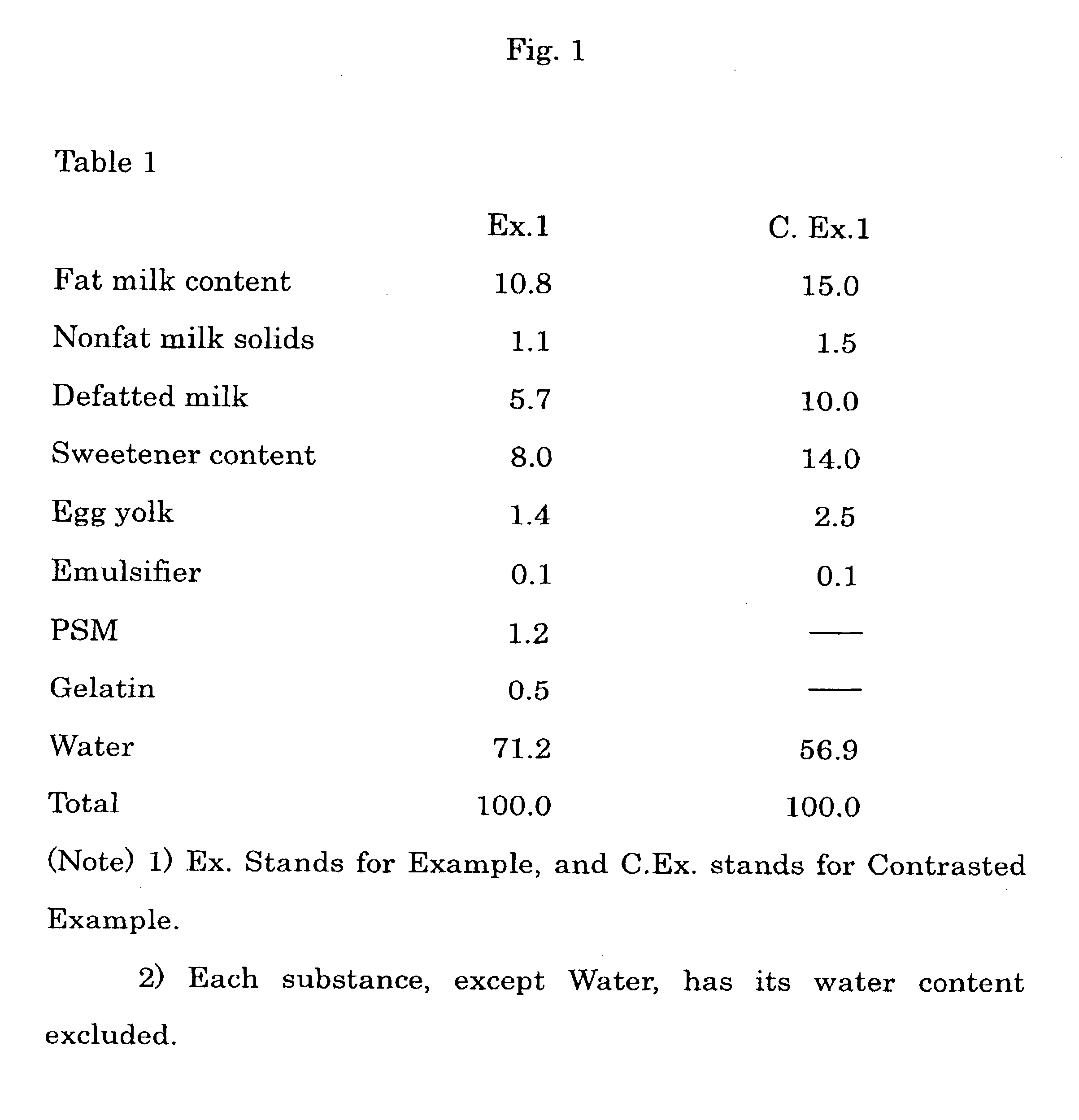Dehydrated frozen confections
a technology of frozen confections and dehydrated water, which is applied in the field of dehydrated or freezedried confections, can solve the problems of less sweet confections, and achieve the effect of ensuring stability over tim
- Summary
- Abstract
- Description
- Claims
- Application Information
AI Technical Summary
Benefits of technology
Problems solved by technology
Method used
Image
Examples
example 1
[0017]This was designed to produce freeze-dried ice cream containing a mixture of 15% or more of milk solid and 8% or more of milk fat.
[0018]A freeze-dried ice cream was produced in accordance with Table 1. More specifically, a starting material was obtained by mixing and dissolving the ingredients in Table 1 in the indicated proportions. Then the solution was homogenized, aged, and frozen into a slurry-state. The slurry-state ice cream was packed in a mold, and frozen into a solid-state. Finally, the solid-state ice cream was freeze-dried. The mixing, dissolving, filtering, homogenizing, pasteurizing, aging, the first-occurring freezing, the second-occurring freezing and the freeze-drying were all performed in a known manner. The overrun rate in the first-occurring freezing was 50%.
[0019]In Example 1 erythritol was solely used as the sweetener; Table 1 shows that 8.0% of it was added. PSM (processed soy material) was added by 1.2% wt as soybean protein. Gelatin was added by 0.5% wt...
example 2
[0024]Xylitol was used as the sweetener. Freeze-dried ice cream was obtained by using a starting material containing a mixture of the ingredients listed in Table 2. It was ascertained that the product has no crack. In Tables 2 and 3, ‘OR’ means an overrun rate, (−) means ‘formation of no crack’, and (±) means that 10 to 20% of all the samples had cracks.
[0025]
TABLE 2Ex. 2Unprocessed cream17.0Defatted milk7.4Xylitole7.4Egg yolk2.6Emulsifier0.1Water65.5Total100.0OR (%)27.1Cracks—
examples 3 to 5
[0026]In Examples 3 to 5 and Contrasted Examples 2 to 4 freeze-dried ice cream was obtained by using erythritol and granulated sugar as the sweeteners. As indicated in parentheses in Table 3, the proportions of these substances to the sweetener were changed. Specifically, in Example 3, erythritol was 40%, in Example 4 it was 30%, and in Example 5, it was 20%. Likewise, in Contrasted Example 2, it was 15%, in Contrasted Example 3 it was 10%, and in Contrasted Example 4 it was 5%. In these Examples 3 to 5 and Contrasted Examples 2 to 4 the total amount of erythritol and granulated sugar was 7.4% of the total content.
[0027]As indicated in Table 3, Examples 3 to 5 had no crack, whereas 10 to 20% of all the samples in Contrasted Examples 2 to 4 had cracks.
[0028]
TABLE 3Ex. 3Ex. 4Ex. 5C.Ex. 2C.Ex. 3C.Ex. 4Unprocessed21.321.321.317.017.017.0creamDefatted milk5.35.35.37.47.47.4Erythritol2.962.221.481.110.740.37(40)(30)(20)(15)(10) (5)Granulated4.445.185.926.296.667.03sugar(60)(70)(80)(85)(90...
PUM
 Login to View More
Login to View More Abstract
Description
Claims
Application Information
 Login to View More
Login to View More - R&D
- Intellectual Property
- Life Sciences
- Materials
- Tech Scout
- Unparalleled Data Quality
- Higher Quality Content
- 60% Fewer Hallucinations
Browse by: Latest US Patents, China's latest patents, Technical Efficacy Thesaurus, Application Domain, Technology Topic, Popular Technical Reports.
© 2025 PatSnap. All rights reserved.Legal|Privacy policy|Modern Slavery Act Transparency Statement|Sitemap|About US| Contact US: help@patsnap.com



